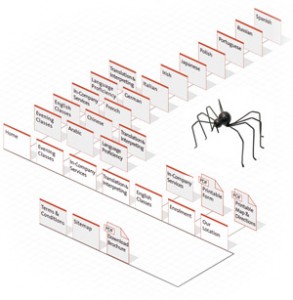
An sitemap is a small XML file that contains all of the URL’s and pages located within your website, and allows you to notify the search engines of these pages existence so that they can be indexed accordingly. Additional information can also be contained within a sitemap including how often certain pages update, priority compared to other web pages on your site, and when the page was last updated.
To put it in the most simple terms possible for those who are completely baffled by what all of this means, by using a sitemap, you can effectively automatically notify the search engines when something has either been added to your website, or when something has been changed. This means that your site has a better chance of being indexed correctly, and this means that you can stop worrying about whether or not the search engines are aware that you have added new content to your website.
How Do I Create A Sitemap?
A sitemap can be created for almost any website, some require some effort, and others requite almost none at all. One of the easiest platforms that allows you to generate a sitemap is WordPress. In this instance, a sitemap is created using an external plug in, which can then be automatically or manually submitted to the search engines for inclusion in their index. In the case of WordPress, the single most reliable and flexible plug in for sitemaps is Google XML Sitemaps; the plug in allows automatic creation and updating of sitemaps, changing certain parameters in your sitemap such as page priority, page updates, and so on.
On other websites that may have been designed from the ground up with no supporting CMS, there are plenty of applications available online for sitemap generation, including XML Sitemaps, however, care does need to be taken with a lot of the online sitemap generators in making sure that they follow the sitemap.xml protocol. If they do not, you will find that most search engines will render the sitemap unreadable, which will result in an ineffective sitemap being submitted.
Where Do I Submit My Sitemaps?
Using the Google XML Sitemaps plugin for WordPress allows for automatic submission to the three major search engines (Google, Yahoo and Bing), however I do recommend manually submitting through Google Webmaster Tools, Bing Webmaster Tools, and through your Site Explorer account on Yahoo. By doing this, you will also be able to monitor other activities on site, such as your Robots.txt validity, crawl errors, and which pages on your site have been indexed in these search engines. Remember that once the search engines have your sitemap on file, they will refer to it from time to time dependent on the parameters set in the file itself.
Surprisingly enough, the simple task of getting your website indexed is one of the most common trouble spots for web masters, and by following the steps above, this will become an easy process for you from here on in. The simple rule of thumb here is that you need to ask yourself something. Do the search engines even know that your website exists? Do they know about your new page? This is what sitemaps are for, and this is why you should probably be using them.


